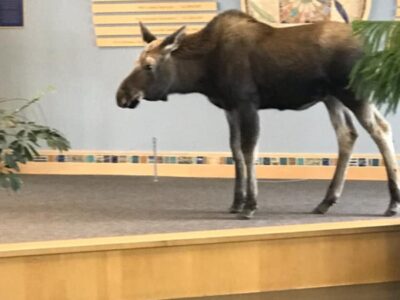
The European Institute for Underwater Archaeology (IEASM) announced that they have uncovered fresh discoveries, including treasures and secrets, at the sunken temple located off the coast of Egypt’s Mediterranean.
Led by Franck Goddio, a French underwater archaeologist, the team recently revealed temples dedicated to the Egyptian god Amun and the Greek goddess Aphrodite
The team investigated the city’s south canal, where huge blocks of stone from the ancient temple collapsed “during a cataclysmic event dated to the mid-second century BC,” the institute said.
The temple to god Amun was where pharaohs came “to receive the titles of their power as universal kings from the supreme god of the ancient Egyptian pantheon,” it said.
“Precious objects belonging to the temple treasury have been unearthed, such as silver ritual instruments, gold jewelry and fragile alabaster containers for perfumes or unguents,” IEASM said. “They bear witness to the wealth of this sanctuary and the piety of the former inhabitants of the port city.”
The archaeological excavations, conducted jointly by Goddio’s team and the Department of Underwater Archaeology of the Ministry of Tourism and Antiquities of Egypt, revealed underground structures “supported by very well-preserved wooden posts and beams dating from the 5th century BC,” the institute said.
“It is extremely moving to discover such delicate objects, which survived intact despite the violence and magnitude of the cataclysm,” Goddio, who is president of IEASM and director of excavations, told the cable news channel.
The discovered temple to Amun served as an extremely important place to the ancient Egyptians.
“The ancient temple was once the site where pharaohs went to receive the titles of their power as universal kings from the supreme god of the ancient Egyptian pantheon,” IEASM explained to The Jerusalem Post.
“Precious objects belonging to the temple treasury have been unearthed, such as silver ritual instruments, gold jewelry and fragile alabaster containers for perfumes or unguents,” IEASM said. “They bear witness to the wealth of this sanctuary and the piety of the former inhabitants of the port city.”
The site dedicated to the Greek goddess of love, Aphrodite, held a number of bronze and ceramic idols.
The Post wrote that the find is believed to have been particularly significant because, according to the researchers, it “illustrates that Greeks who were allowed to trade and settle in the city during the time of the Pharaohs of the Saïte dynasty (664 – 525 BC) had their sanctuaries to their own gods.”
Goddio also found a number of weapons belonging to Greek mercenaries. “They were defending the access to the Kingdom at the mouth of the Canopic Branch of the Nile. This branch was the largest and the best navigable one in antiquity,” IEASM continued.










Use for Tourism